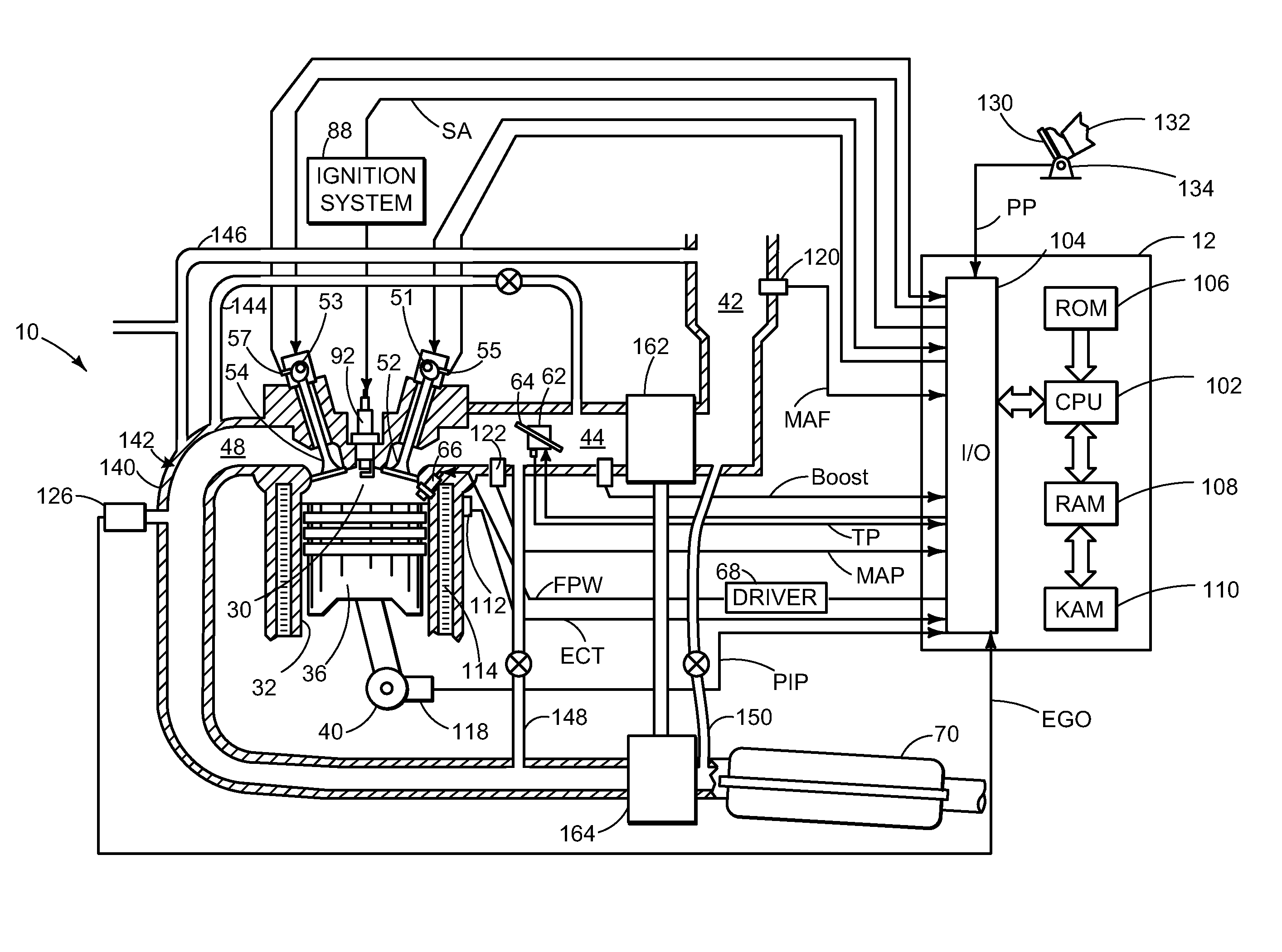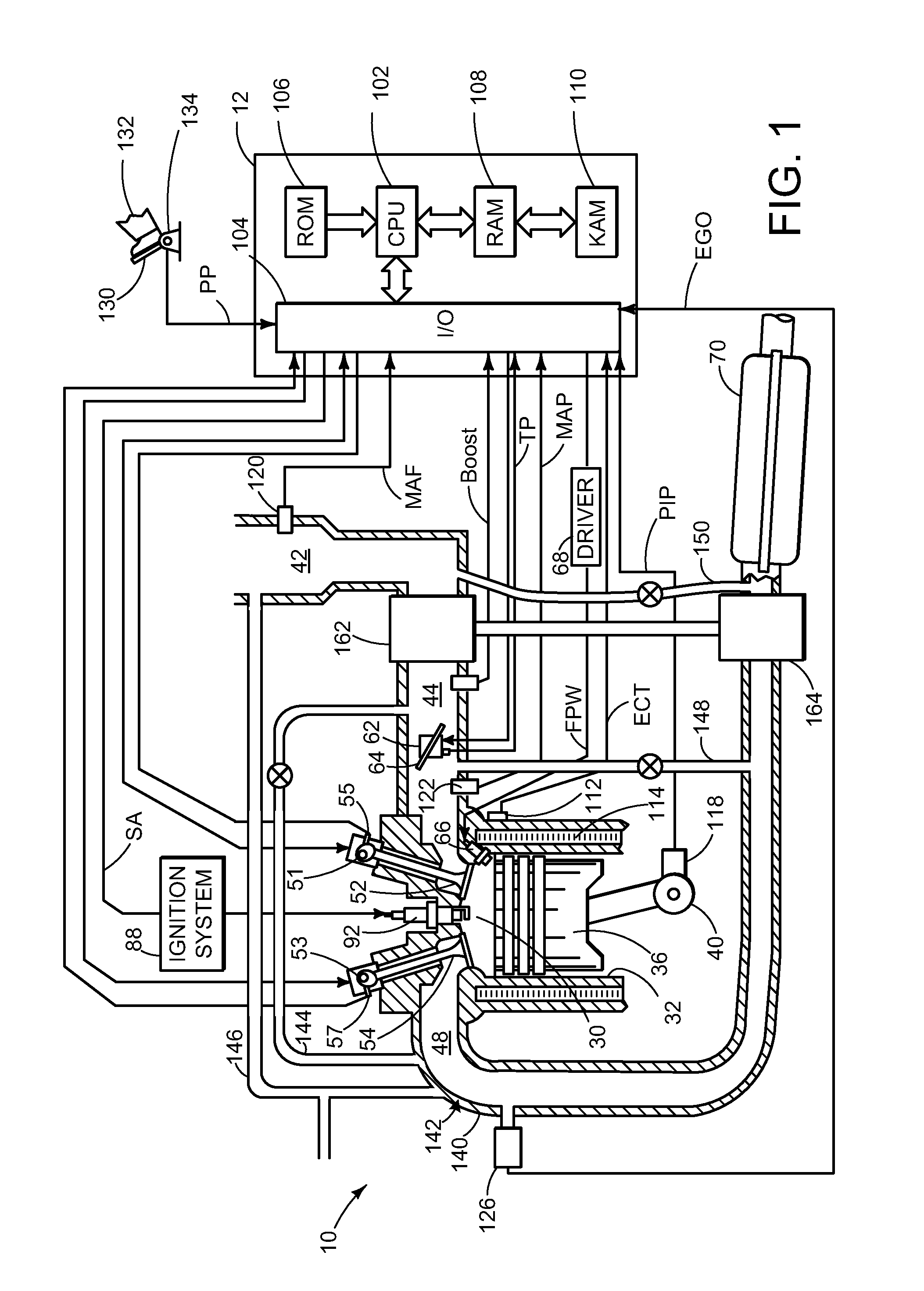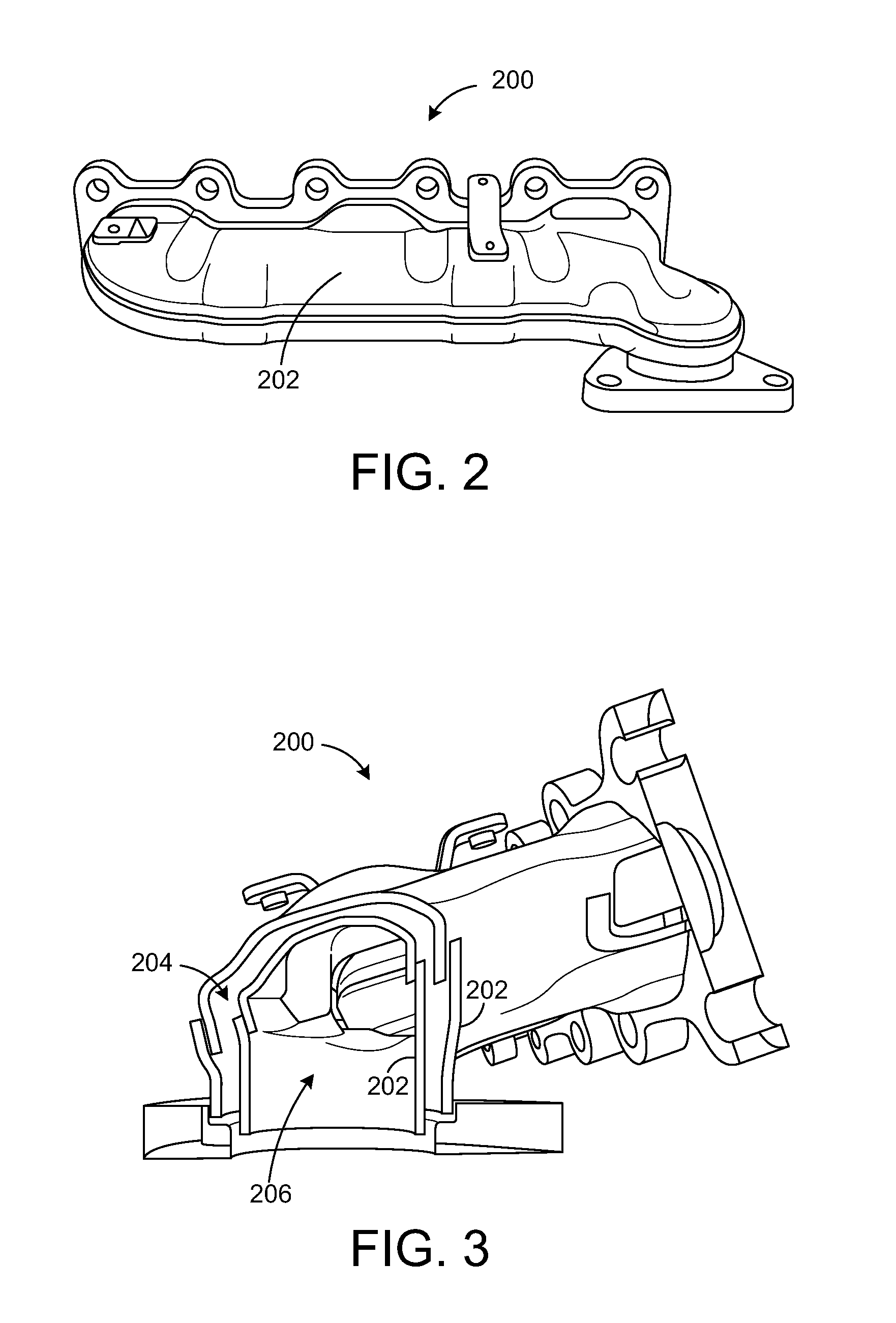Intake air heating and exhaust cooling
a technology of intake air and cooling air, which is applied in the direction of combustion-air/fuel-air treatment, air intakes for fuel, machines/engines, etc., can solve the problems of limiting the amount of heat that can be provided to the engine inlet air and limiting the portion of the trip time, so as to reduce the loss of pumping and accelerate the engine warm-up
- Summary
- Abstract
- Description
- Claims
- Application Information
AI Technical Summary
Benefits of technology
Problems solved by technology
Method used
Image
Examples
Embodiment Construction
[0014]Embodiments of intake air heating and exhaust cooling are disclosed herein. Such an approach utilizes an interstitial space of a double wall exhaust manifold for heating intake air when the intake manifold pressure is less than ambient pressure and for cooling exhaust gas when the intake manifold pressure is greater than ambient pressure, as described in more detail hereafter.
[0015]FIG. 1 is a schematic diagram showing one cylinder of multi-cylinder engine 10, which may be included in a propulsion system of an automobile. Engine 10 may be controlled at least partially by a control system including controller 12 and by input from a vehicle operator 132 via an input device 130. In this example, input device 130 includes an accelerator pedal and a pedal position sensor 134 for generating a proportional pedal position signal PP. Combustion chamber (i.e., cylinder) 30 of engine 10 may include combustion chamber walls 32 with piston 36 positioned therein. Piston 36 may be coupled to...
PUM
 Login to View More
Login to View More Abstract
Description
Claims
Application Information
 Login to View More
Login to View More - R&D
- Intellectual Property
- Life Sciences
- Materials
- Tech Scout
- Unparalleled Data Quality
- Higher Quality Content
- 60% Fewer Hallucinations
Browse by: Latest US Patents, China's latest patents, Technical Efficacy Thesaurus, Application Domain, Technology Topic, Popular Technical Reports.
© 2025 PatSnap. All rights reserved.Legal|Privacy policy|Modern Slavery Act Transparency Statement|Sitemap|About US| Contact US: help@patsnap.com



